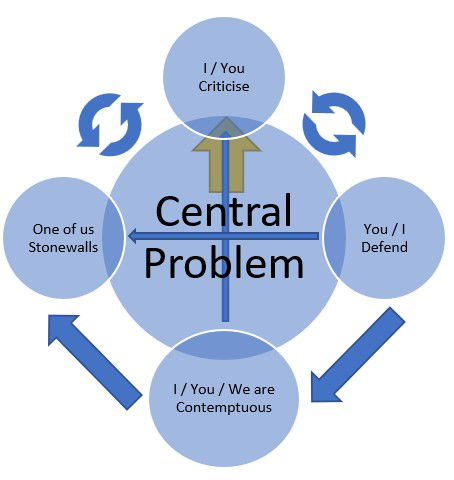Kindness in Conflict
Conflict is a natural part of human interaction. We are all different, with unique views of the world, and. When you put two people, with different personalities, opinions, and perspectives in a situation where emotions run high and they need to troubleshoot a problem, you've got a beautiful equation for conflict.
The question is, what does the conflict look like for you? What's your template - your expectation - of how conflict is going to play out? Is it loud, angry, hostile, aggressive? Are there hateful words being said? If this is what comes to mind for you, you're not alone.
It doesn't have to be that way.
Learn how to disagree
You don't have to see things the same way as the other person. You don't even need to agree with their perspective. Having said that, it is important that you remain respectful.
We all want to feel heard and it's normal to see our personal views as the 'right' ones. Right, however, is subjective. Just because it's different than yours doesn't make it wrong.
John Gottman's Four Horsemen
Learn how to fight fair. Express yourself with kindness, respect, and a willingness to learn. Below is a list of the four most common ways people argue. Identified by John Gottman and his wife, these "Horsemen" of conflict are predictors of divorce in romantic relationships, and can, by assessing the alternative approaches, provide a blueprint for the ways to engage in kind and constructive conflict.

- Criticise them - Are you criticising or attacking your partner. Are you using a lot of “you” statements and accusatory language; blaming them for how they made you feel, what they have done wrong, etc.
- Defend yourself - The person defends themselves against the attack (i.e., justifying their behaviour, dismissing the claim as false/misunderstood, blaming the other person)
- Be contemptuous - This adds fuel to the fire and is the greatest predictor of divorce. Contempt belittles your partner and places you on a pedestal of superiority. Scoffing, sarcastic comments, eye-rolling, cynicism, mockery, hostile humour, and dismissive comments are all examples of contemptuous behaviour.
- Stonewall - One of the individuals shut down and withdraw from the conversation, physically or psychologically.
Instead of those four... try these
- Raise a complaint - Raise a complaint about an issue – one at a time – and propose a solution where possible.
- Accept accountability - Seek clarity and take accountability. “So, if I understand correctly, what you’re saying is… Is that right?” or “I’m not sure I understand, can you please help me understand what you mean?”, and “I can see how that would be upsetting/frustrating/disrespectful” or “I’m sorry, I completely forgot. Thank you for reminding me, I’ll do that now.” Remember that taking accountability for your actions does not mean that you are to blame for the conflict.
- Be kind & clear - Short-term (in the conflict) Describe your feelings and state your needs “I feel ___ about/when you ____. Can we please find a time to talk about this” or “_____ is very important to me. It would mean a lot to me if you could help me with that.” Long-term (consistently throughout the relationship) use the Magic Ratio 20(+):1(-) to create a culture of respect, kindness, and strength. Small things consistently: a kiss, a hug, a kind work, thanking your spouse for their support; choose to focus your energy on Recall the good times you have shared as well as the hard times that you have overcome; your relationship can withstand the discomfort of addressing this conflict, and it will be stronger for it.
- Call for a pause - Call for a pause. It takes at least 20-30 minutes for the brain to reengage after reaching the point of escalated/heated conflict. Let your partner know that you need a break. This break can serve two functions: 1) it allows both of you to regulate, which will make the return to the interaction more considered and constructive; 2) it is an exercise in trust – “I trust you to give me some space; my partner trusts me to return.” In order for the break to be effective it must be discussed and agreed upon between both partners in a low-tension setting (i.e., during neutral conversation, perhaps during to check in or in therapy). This discussion should include the timeframe of the break (no more than 60 minutes), general phrases that may be used to call for the pause, and the commitment to honour the request.
A word to the wise
- Take some time to identify which of the Horsemen you are most likely to use in an argument
- When you are in conflict, pull yourself up when you use the Horsemen, “I’m sorry, that was really critical of me. Let me try again.” – they will appreciate the sentiment.
- Put yourself in the other person's shoes. You may not agree with their perspective but that doesn’t make it wrong. Their feelings are just as important as yours, but their experience of the world may mean that they feel differently, or have a different opinion, than you do about the same situation.
- Seek understanding. When in doubt, ask a question. If you don’t understand why your partner is sensitive about a particular topic, ask them if they can help you to understand.
- Be kind & stay well. Until next time, Amylia